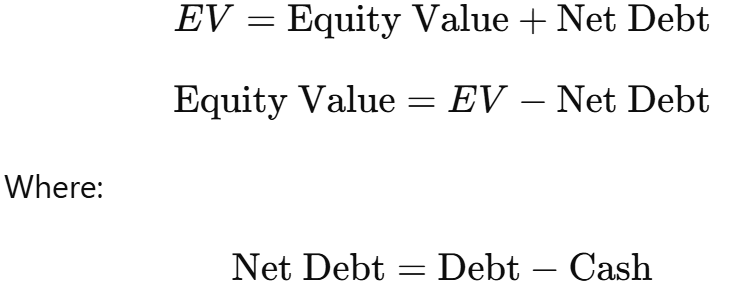4. Equity Valuation, Payout Policy, Multiples, Real Options
1/20
There's no tags or description
Looks like no tags are added yet.
Name | Mastery | Learn | Test | Matching | Spaced |
|---|
No study sessions yet.
21 Terms
Constant growth dividend discount model idea
• A mature dividend paying stock can be valued as the PV of an infinite stream of dividends that grow at a constant rate
• Used for stable firms with predictable growth
Dividend payout rate definition
• Payout rate is dividends divided by earnings for the period
• Retention rate is one minus the payout rate

Link between payout, ROE and earnings growth in simple model
• Higher retention combined with high return on new investment leads to higher earnings growth
• If new projects earn only the equity cost of capital growth does not create extra value
When a higher payout can reduce stock value in this framework
• If the firm has positive NPV reinvestment opportunities then increasing payout cuts valuable reinvestment
• Lower reinvestment reduces growth and lowers share value
When payout policy is irrelevant in this framework
• If new projects earn exactly the equity cost of capital or there are no good projects
=> Shifting between payout and reinvestment does not change firm value
Valuing a stock with finite high growth then stable growth
• Forecast dividends explicitly during the high growth phase and discount them
• Add a terminal value based on long run stable growth from the first stable year
Effect of share repurchases on earnings and dividends per share
• Repurchases reduce shares outstanding
• For given total earnings and dividends this increases earnings per share and dividend per share even if total cash paid out is unchanged
Present Value of Growth Opportunities concept
• PVGO is the part of the share price that comes from future growth projects rather than current assets
• High PVGO indicates value is driven by expected new investments

Enterprise value definition
• EV is total value of the operating business
• Equal to equity value plus net debt where net debt is interest bearing debt minus excess cash

Difference between firm value and equity value
• Firm or enterprise value reflects value of operations for all investors
• Equity value is what remains for shareholders after subtracting net debt and adding non operating assets

Free Cash Flow to Equity
• FCFE is cash remaining after operating costs taxes interest and necessary reinvestment plus net new borrowing
• It is the cash that can be paid out to shareholders

Purpose of using trading multiples (CCA)
• CCA uses valuation ratios from traded comparable firms to infer a value for the target
• They translate a financial metric like EBITDA into an implied EV or EqV
When trading multiples are most reliable
• When comparable firms have similar business model growth profitability and risk
• When accounting is comparable and capital structure differences are handled with EV based multiples
Why EV to EBITDA is often preferred to P/E for project value
• EV/EBITDA uses an operating cash flow proxy before interest and taxes
• It is less distorted by leverage or differences in interest expense than price to earnings
Real option
• A real option is the right but not the obligation to take a business decision such as invest, expand, shut down, or delay in response to new information
• Example right to open more stores after a pilot store succeeds
Option to delay investment intuition
• Waiting to invest can be valuable when uncertainty is high
• You give up immediate cash flows but gain information that helps avoid bad projects
Option to expand
• Successful early performance can trigger additional investment that was not mandatory
• This upside optionality makes the initial project more attractive than a static NPV suggests
Option to abandon
• Management can stop a loss making project and recover some value through sale or liquidation
• This limits downside risk and increases overall project value
Why simple DCF can undervalue projects with flexibility
• Standard DCF assumes a fixed plan and ignores future managerial choices
• Real options add value because managers can adapt decisions after uncertainty resolves
Basic steps in binomial valuation of a real option
• Build a tree of possible future values of the underlying project or asset
• Define option payoff at final nodes then work backward using replication or risk neutral probabilities and discounting at the risk free rate
Meaning of risk neutral probabilities in option valuation
• They are artificial probabilities adjusted so the expected return on the underlying equals the risk free rate
• They allow pricing by discounting expected future payoffs at the risk free rate